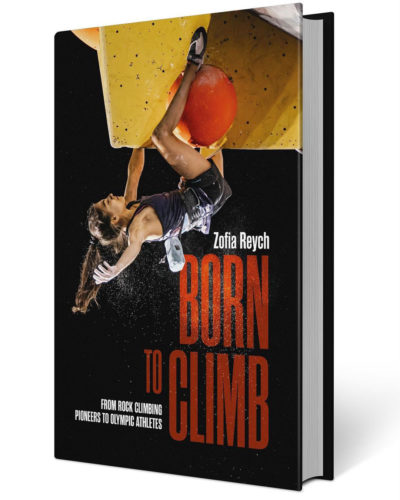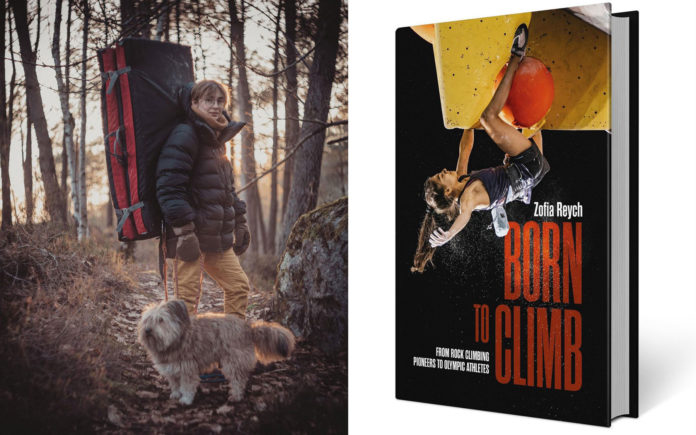
In the opening of Born to Climb (Vertebrate Publishing), author Zofia Reych says the book aims to “paint an accurate and full image of a sport that in recent years has captivated the world like no other.” And throughout the book’s 145 pages, Reych does just that—surveying climbing’s global history and spotlighting milestones, from nineteenth century ascents to twentieth century competition origins and twenty-first century Olympic inclusion.
Many of the sport’s biggest names (Kurt Albert, Lynn Hill, Alex Honnold, Chris Sharma and Shauna Coxsey, to name a few) are referenced in various parts of the book, as climbing’s history is ultimately inseparable from the people and personalities that give it a cohesive story. But Reych also points out the occasional misconceptions, missteps and misdirections within climbing’s complex past. Indeed, one of the most interesting early anecdotes in the book pertains to the creation of London’s Alpine Club in the 1800s and the criticism it received from Victorian-era intellectual John Ruskin. “He chastised mountaineers for the vanity and self-centredness that fuelled their desire for first ascents,” Reych notes. Much later in Born to Climb, Reych explores the peculiar nature of climbing’s Combined format for the Tokyo 2020 Olympics—which also received its fair share of criticism.
Reych is a Climbing Business Journal contributor and an anthropologist (possessing a master’s degree from the University of London), so Born to Climb possesses a lot of enjoyable, intellectual heft. But the text is framed less academically and more autobiographically, with Reych’s own experiences providing a first-person anchor to the thoroughly researched, historical plot points. Although climbing gyms, in particular, are not a major exploratory point throughout the book, Reych does a solid job of explaining when and how gyms appeared on climbing’s timeline—and how the rise of gyms dovetailed with a boom in climbing media. (“It could be argued that modern content marketing was born when skateboarding brands started featuring in and sponsoring skateboard media. A similar process occurred within climbing, with discrete advertising for gear appearing among magazine pages, on VHS covers and in the videos themselves.”)

Granted, gone are the days when practically every climbing gym it seemed had a jam-packed bookshelf of well-worn climbing paperbacks, guidebooks, and back issues of Climbing and Rock and Ice—a makeshift library for members to peruse while resting; Reych’s book would have been a perfect staple for such a gym setup. But given more modern gym configurations, Born to Climb makes for a thorough and engaging addition to any climbing gym’s retail area.

John Burgman is the author of High Drama, a book that chronicles the history of American competition climbing. He is a Fulbright journalism grant recipient and a former magazine editor. He holds a master’s degree from New York University and bachelor’s degree from Miami University. In addition to writing, he coaches a youth bouldering team. Follow him on Twitter @John_Burgman and Instagram @jbclimbs. Read our interview Meet John Burgman, U.S. Comp Climbing’s Top Journalist.








